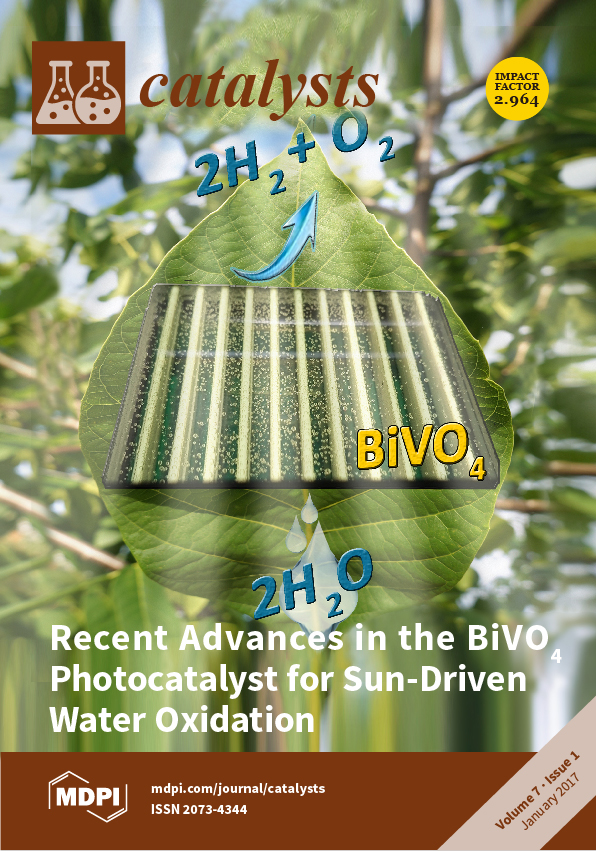The steam reforming of ethanol (SRE) on a bimetallic RhPt/CeO
2 catalyst was evaluated by the integration of Response Surface Methodology (RSM) and Aspen Plus (version 9.0, Aspen Tech, Burlington, MA, USA, 2016). First, the effect of the Rh–Pt weight ratio (1:0, 3:1,
[...] Read more.
The steam reforming of ethanol (SRE) on a bimetallic RhPt/CeO
2 catalyst was evaluated by the integration of Response Surface Methodology (RSM) and Aspen Plus (version 9.0, Aspen Tech, Burlington, MA, USA, 2016). First, the effect of the Rh–Pt weight ratio (1:0, 3:1, 1:1, 1:3, and 0:1) on the performance of SRE on RhPt/CeO
2 was assessed between 400 to 700 °C with a stoichiometric steam/ethanol molar ratio of 3. RSM enabled modeling of the system and identification of a maximum of 4.2 mol H
2/mol EtOH (700 °C) with the Rh
0.4Pt
0.4/CeO
2 catalyst. The mathematical models were integrated into Aspen Plus through Excel in order to simulate a process involving SRE, H
2 purification, and electricity production in a fuel cell (FC). An energy sensitivity analysis of the process was performed in Aspen Plus, and the information obtained was used to generate new response surfaces. The response surfaces demonstrated that an increase in H
2 production requires more energy consumption in the steam reforming of ethanol. However, increasing H
2 production rebounds in more energy production in the fuel cell, which increases the overall efficiency of the system. The minimum H
2 yield needed to make the system energetically sustainable was identified as 1.2 mol H
2/mol EtOH. According to the results of the integration of RSM models into Aspen Plus, the system using Rh
0.4Pt
0.4/CeO
2 can produce a maximum net energy of 742 kJ/mol H
2, of which 40% could be converted into electricity in the FC (297 kJ/mol H
2 produced). The remaining energy can be recovered as heat.
Full article





